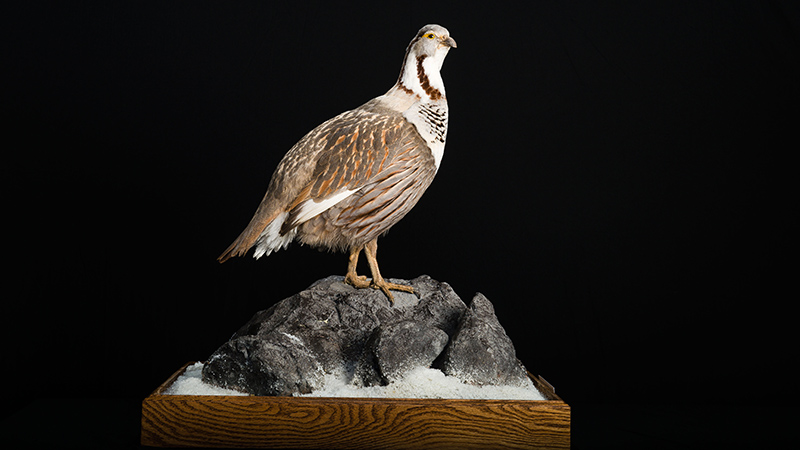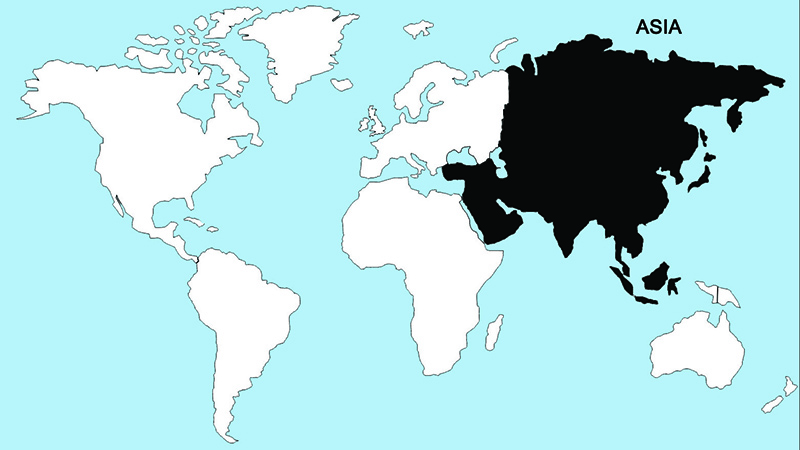Himalayan Snowcock

The native range of this spectacular alpine-adapted partridge is the Himalayas of southern Asia, where it occurs from Afghanistan east to western China. It has been successfully introduced into Nevada, occurring locally in the Ruby and East Humboldt ranges of Elko County, and probably numbers in the hundreds of birds. In the Himalayas the birds range from 12,000–17,000 feet altitude during the summer months, occupying mountain meadows where grass is available. In Nevada they are usually found around glacial cirques and on alpine tundras, remaining above 10,000 feet, even during winter. Their large body size, with males weighing up to nearly seven pounds and females up to about five pounds, probably allows them to survive in the intense cold to which they are exposed.
They are gregarious birds, forming large groups of 10–20 individuals, and rarely may number up to 50. Males utter various loud whistling notes, which very probably serve territorial and advertisement functions. Nests have been found at the extreme crest of hills, or in sheltered locations on the leeward slope. The usual clutch is 4–6 eggs, but at times up to seven or more are present. Only the female incubates, while the male remains nearby as a lookout. The incubation period is about 25 days, and in Nevada the average brood size in one study was 5.7 chicks.
Regions Birds Are Found

Collection Location & Year
Azerbaijan 2004
Taxonomy
| Order | Galliformes |
|---|---|
| Family | Phasianidae |
| Tribe | Perdicini |
| Species | Tetraogallus |
| Genus | himalayensis |
Gender
Male
References
- del Hoyo, J. A. Elliot, and J. Sargatal, eds. 1994. Handbook of Birds of the World. Vol. 2 (New World Vultures to Guineafowl). Barcelona, Spain: Lynx Editions.
- Johnsgard, P. A. 1999. The Pheasants of the World: Biology and Natural History. Washington, DC: Smithsonian Institution Press.